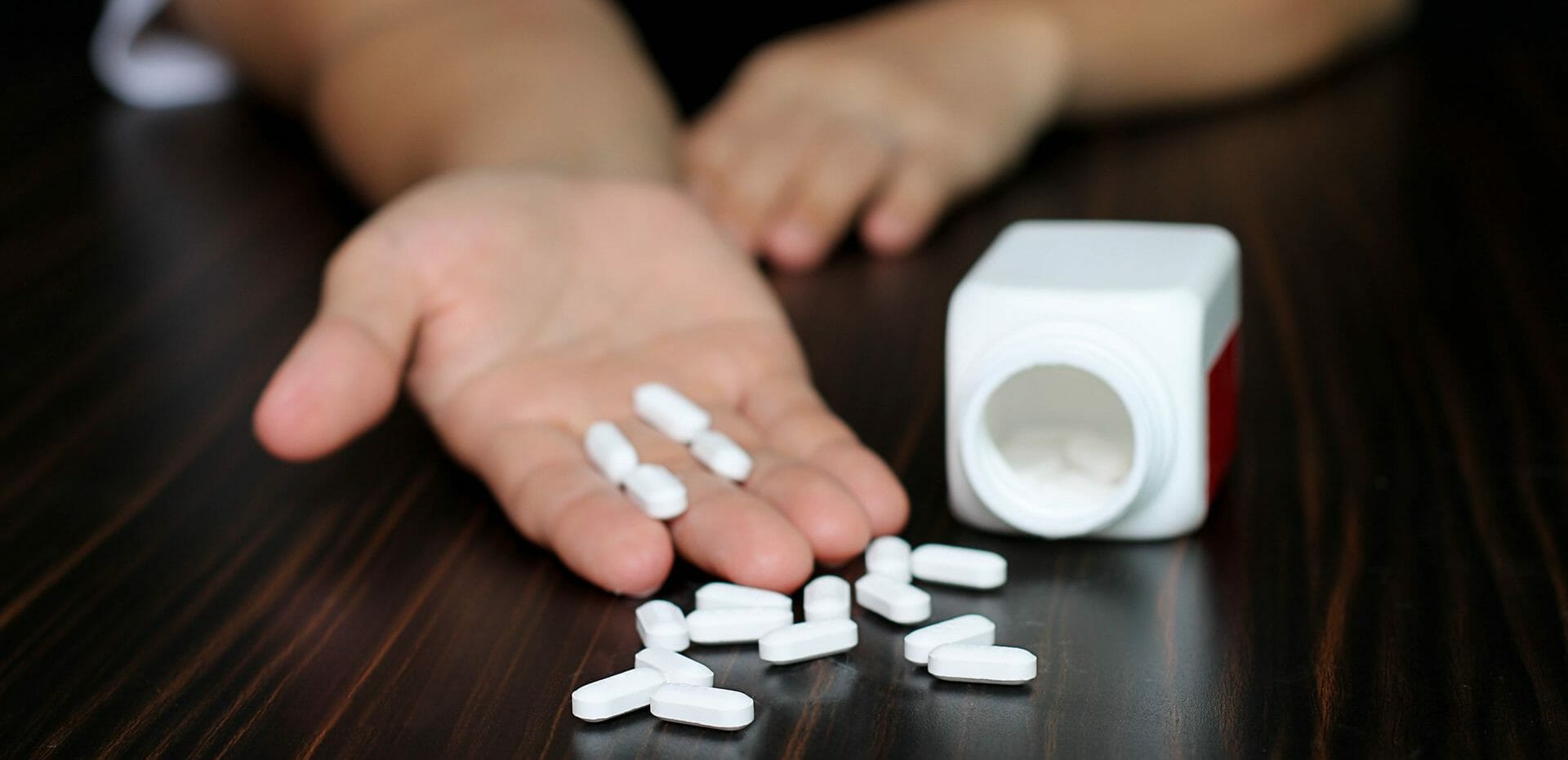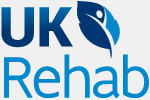Oxycontin Addiction Explained
What Is OxyContin?
OxyContin is the brand name for a slow-release version of the opioid oxycodone. Opioids are either directly extracted from the poppy plant (opium) or synthetically derived from it. They are also known as opiates, but this word is specifically given to more direct, natural derivatives of opium such as morphine, codeine and heroin. Opioids used to refer solely to synthetic derivatives such as Fentanyl and OxyContin but now refers to the entire class of opium-derived narcotics.
The drug is given to patients who are suffering from moderate to severe pain arising from terminal illnesses such as cancer or recovery from surgery or trauma. Non-opioid analgesics are effective at intercepting pain receptors activated by muscle, joint and bone pain. Opioid painkillers are effective at targeting visceral pain that originates from nociceptors of the pelvic, thoracic or abdominal viscera (organs).

Individuals who use this drug according to the instructions given to them by medical staff rarely develop problems with dependence or addiction. However, the sense of euphoria and well-being that can be brought on by the substance can cause addiction in some people. Doctors are advised to avoid prescribing opiates to people with a history of substance abuse. OxyContin has been called ‘hillbilly heroin’ due to its relative cheapness and availability.
Call our admissions line 24 hours a day to get help.
OxyContin brand and street names
There are several prescription substances that contain the active ingredient in OxyContin, oxycodone. If an individual or loved one seems to be abusing OxyContin, finding any of these other medications is most likely a sign of fairly severe substance dependence and medical help must be sought:
- Endocet
- Endodan
- Oxyfast
- Percocet
- Percodan
- Roxicet
- Roxicodone
- Roxiprin
- Tylox
- Xolox
It can be useful for those who care for people with a history of drug abuse to get to know street names for substances that individuals may use to try to conceal their use. Some alternate names used for OxyContin include:
- C.
- Oxycet
- Oxycotton
- Oxy
- Percs
- Blues
- Kickers
- Roxy
- Hillbilly heroin
Available forms and routes of administration of OxyContin
OxyContin comes in tablet form to be ingested orally once a day. The dosage is dependent on the severity of the pain experienced as well as the individual’s previous usage of analgesics. There are nine available tablets with varying doses:
- 5 mg tablet, 4.5 mg of oxycodone and 5 mg of oxycodone hydrochloride
- 10 mg tablet, 9.0 mg of oxycodone and 10 mg of oxycodone hydrochloride
- 15 mg tablet, 13.5 mg of oxycodone and 15 mg of oxycodone hydrochloride
- 20 mg tablet, 18.0 mg of oxycodone and 20 mg of oxycodone hydrochloride
- 30 mg tablet, 27 mg of oxycodone and 30 mg of oxycodone hydrochloride
- 40 mg tablet, 36.0 mg of oxycodone and 40 mg of oxycodone hydrochloride
- 60 mg tablet, 54 mg of oxycodone and 60 mg of oxycodone hydrochloride
- 80 mg tablet, 72.0 mg of oxycodone and 80 mg of oxycodone hydrochloride
- 120 mg tablet, 108 mg of oxycodone and 120 mg of oxycodone hydrochloride
Oxycodone, the active ingredient in OxyContin, comes in five forms: solution, extended-release capsule, immediate-release capsule, extended-release tablet and immediate-release tablet. It is approved for oral, intravenous and intramuscular use in the United Kingdom. Immediate-release drugs take effect in the bloodstream instantly, while extended-release versions are released into the bloodstream gradually over a period of time.
Medical uses of OxyContin
OxyContin is prescribed to people who are experiencing moderate to severe pain caused by cancer or post-operative pain. The active ingredient, oxycodone, is an analgesic that is gradually released over a period of 12 hours. It should only be prescribed for conditions that call for the use of a strong opioid.
The Pharmacology of OxyContin
The active ingredient in OxyContin is oxycodone, which is a semi-synthetic opioid that binds to mu, kappa and delta receptors in the brain and promotes agonist activity. OxyContin takes effect, on average, after one hour, and the effects last for 12 hours. There are two metabolites that are activated by the drug, oxymorphone, which is very strong, and noroxycodone, which is relatively weak.
Like other opioids, oxycodone binds to the opiate receptors, hyperpolarises neurons, inhibits adenylyl-cyclase and decreases excitability. Tablets are designed to be taken whole and never crushed, broken or chewed. Dosage usually starts at 10 mg per day, and then judgment is used as to whether the dose needs increasing and by how much. The predominant side effects are drowsiness, constipation and nausea.
The structure of oxycodone shares many characteristics with another opioid analgesic, codeine, but shares its potency and efficacy with arguably the most effective opiate, morphine. Not only do these drugs suppress physical pain in the central nervous system, but they also affect how an individual emotionally responds to pain. Like most narcotics, a person’s day-to-day functioning can be impaired in areas such as driving and other physical and mental activities.
Chemical formula — C18H21NO4
The chemical name of OxyContin (oxycodone hydrochloride) is 4, 5α-epoxy-14-hydroxy-3-methoxy-17-methylmorphinan-6-one hydrochloride. The structural formula appears as:
OxyContin Legal Status (UK)
All direct derivatives of opium are Class A controlled drugs in the United Kingdom, where there are three classifications of controlled substances, A, B and C.
While different drugs affect people in varying ways, this scale is designed to categorise the level of harm that misuse of the substance has the potential to cause. Controlled substances across all categories can be highly dangerous when misused.
Other drugs in the Class A bracket include Class B drugs when prepared for intravenous use, remifentanil, opium, MDMA, ecstasy, heroin, cocaine and pethidine hydrochloride. If a person is caught by the police with a controlled substance, their punishment is determined by the quantity found, previous offenses and the class of the drug. Class A drugs carry a sentence of up to seven years in prison and/or an unlimited fine.
The Misuse of Drugs Regulations 2001 organised controlled substances into five categories (schedules 1-5) that define who can manufacture, import, export, prescribe and possess them. Opiates are classed as schedule 2, so production, supply and sale are only authorised by pharmacists and other persons named in the regulations. Drugs in this category must be subjected to the full controlled drug requirements, and a controlled drug register must be kept.
OxyContin Addiction and How It Develops
OxyContin addiction has been a particular problem in the United States, where it was heavily marketed for non-malignant pain relief in the 1990s.
The pretence of many of the marketing campaigns was that society was suffering from an epidemic of untreated pain that needed addressing. Arguably this led to the drug being prescribed in cases where a lesser analgesic would suffice, and this increase in availability helped to facilitate an epidemic of opiate abuse.
Sales of OxyContin increased from $48 million in 1996 to over $2.4 billion, an increase that is reflected in the sales of most opioids over a similar period of time. In Canada, the number of prescriptions for oxycodone increased by 850% between 1991 and 2007. This increased access also led those prone to substance abuse to learn of the euphoric, heroin-like effects of prescription opiates.
Statistics from the United Kingdom in 2017 suggest that over 192,000 people may be dependent on OxyContin. Individuals who are suffering from spinal conditions, chronic arthritis, cancer and other long-term health conditions have described the powerfully addictive nature of the psychoactive drug. Many patients who develop an addiction to the drug begin by not taking their prescribed medication as directed.
OxyContin abuse can also develop when people use it to self-medicate, either by using it as a replacement for heroin or morphine or by acquiring it unlawfully to treat pain or in accordance with other substances. Addiction can quickly occur if an individual crushes the tablet and snorts, injects or swallows it to obtain immediate effects intended for release over 12 hours.
Why is OxyContin addictive?
Due to the fact it is highly effective as a painkiller and also brings on feelings of euphoria and well-being, it seems even people who have been prescribed the drug perfectly legally can start to abuse it. Opioids release endorphins in the brain; these are neurotransmitters that help to make us feel good. When these feelings wear off, it can be depressing and lead to an intense craving to recreate the sensation of endorphins being released.
Abusers of the drug who take more than a doctor has prescribed can develop a tolerance that leads to them needing to take the drug in higher quantities. If an individual can’t get their doctor to increase the dose, they may turn to illegal methods of obtaining the drug, which can lead to a downward spiral.

Causes and Risk Factors for OxyContin Addiction
Those who abuse OxyContin often start out by administering the drug in a way other than directed.
The life-threatening practice of crushing and snorting, injecting or swallowing the pills rapidly delivers an amount of the active substance that was intended for release over the course of 12 hours. Taking more than the recommended dose and taking the drug more often than directed by the doctor are two of the biggest risk factors for developing OxyContin addiction.
The length of time someone uses an opioid can be an important factor in the development of addiction. Even taking an opioid for more than a few days can lead to long-term addiction if not carefully supervised. Women have a higher risk of developing an opioid addiction due to the significantly increased likelihood for women to suffer from chronic pain. Other risk factors include:
- Unemployment
- Poverty
- Personal history of substance abuse
- Family history of substance abuse
- Criminal history or legal problems, including DUIs
- Young age
- Regular contact with high-risk people or environments
- Mental health problems
- Prior treatment for alcoholism or drug rehabilitation
- Stressful life circumstances
- Heavy tobacco use
- Severe anxiety or depression
- Thrill-seeking or risk-seeking behaviour
Signs and Symptoms of OxyContin Addiction
Emotional state symptoms
When an individual is in the throes of addiction, their emotional state is often extremely inconsistent. This can be characterised by irritability and panic when they are running out of or cannot get hold of a supply of OxyContin. In contrast, they may be euphoric when they do have a supply or even apathetic and disinterested.
- Euphoria
- Delight
- Depression
- Anxiety
- Panic attacks
Behavioural symptoms
The behaviour of an individual who is abusing substances is often the aspect that reveals their addiction. Initially, their actions surrounding drug use become unusual. As the addiction progresses, the atypical behaviour manifests in more aspects of their life, having a progressively more harmful impact on their ability to function. Mixing opiates with other psychoactive substances such as alcohol or illicit drugs is an extremely dangerous behaviour that should be addressed immediately.
- Taking more and more of the drug to achieve the same effects
- Stealing or borrowing narcotics from friends and family
- Forging prescriptions for OxyContin
- Robbing pharmacies
- Crushing or chewing the tablet to achieve a greater high
- Risky behaviours
- Legal problems
- Isolation from friends and loved ones
- Preoccupation with obtaining, using and recovering from the effects of OxyContin
- Neglecting personal appearance
- Neglecting personal responsibilities
- Unusually poor academic and occupational performance
Call our admissions line 24 hours a day to get help.
Physical symptoms
Like alcoholism, opiate addiction has a gripping impact on the body as well as the mind. This occurs because of the endorphins that are released when the opioid receptors are stimulated. The body craves this release, which is expressed as cravings for OxyContin and anxiety about how to keep obtaining more.
- Constipation
- Fatigue
- Nausea and vomiting
- Abdominal pain
- Sweating
- Itching
- Loss of appetite
- Urinary retention
- Dizziness
- Light-headedness
- Hypotension
- Respiratory depression
- Heart attack
- Cardiovascular complications
- Coma
- Death
Psychological symptoms
The psychological symptoms and effects of opiate addiction can be long-term if the problem is not addressed. Physicians recommend at least a year of therapy even after the dependence has completely stopped in order to prevent underlying psychological issues from causing a relapse. Some scientists also believe the brain is altered by the mechanisms of long-term substance misuse but that this damage is not necessarily irreparable.
- Addiction
- Anxiety
- Depression
- Panic attacks
- Worsening of mental illnesses
- Hallucinations
- Paranoia
- Delusions
Side Effects of OxyContin Abuse
OxyContin is a Class A, schedule 2 substance, which means it can be highly dangerous when used in any way other than strictly how the doctor has advised.
It is a drug that has a lot in common with heroin, and even people who have been legally prescribed it should be wary of its strength. The side effects can be debilitating. They can also be a contributing factor in continued use due to the belief that taking more will stop the pain.
- Heart failure
- Constipation
- Insomnia
- Depression
- Aches and cramps
- Increased pressure of spinal fluid
- Coma
- Swelling in limbs
- Death
Co-Occurring Disorders with OxyContin Addiction
Co-occurring disorders such as mental health problems or issues with other substances can also be known as a dual diagnosis.
Common mental health problems that are associated with dual diagnosis include anxiety, depression and bipolar disorder. Sometimes, people can try to use oxycodone as a substitute for heroin and end up with an addiction to both prescription and illicit drugs. These cases are best treated at a well-regarded drug rehabilitation facility.

The most important focus of health professionals when it comes to dual diagnosis is to identify and treat any underlying mental health problems. It is important to address these issues, as treating just the addiction could be a temporary solution. It is generally accepted that people abuse substances in order to self-soothe where emotional pain is involved. As such, treating the underlying cause leads to an increased likelihood of overall recovery.
When it comes to treating co-occurring drug addictions, it is integral that the individual completes a closely supervised drug withdrawal programme. This usually includes group therapy, individual therapy and a recovery plan tailored to the person’s circumstances.
Either intensive outpatient or inpatient detoxification is required to tackle the physical and mental symptoms associated with a dual diagnosis.
OxyContin Overdose Explained
Overdosing on oxycodone often occurs when an individual has developed a strong addiction to the drug and takes a higher dose to obtain effects.
An overdose can also occur when the drug is used in conjunction with other substances such as alcohol or other psychotropic drugs that potentiate the effects of oxycodone. Some of the physical effects that may be present include drowsiness, pinpoint pupils, respiratory depression and low blood pressure.
Serious cases can induce circulatory failure and drowsiness progressing to a coma or stupor, slow heart rate, hypotonia, accumulation of fluid in the lungs and even death. In case an individual or loved one sees any of the aforementioned symptoms, they must contact the emergency services immediately and try to ensure the sufferer’s airways remain clear.
It is recommended that those who overdose on OxyContin have their stomachs pumped surgically or by using charcoal to purge the tablet(s) and prevent the slow release of the active chemical. Overdoses can be treated by medical professionals; however, it is an incredibly dangerous state to get into and unfortunately too easy for those who abuse the drug. There is a high risk of harm when taking other substances that depress the central nervous system while using oxycodone.
Call our admissions line 24 hours a day to get help.
OxyContin Withdrawal and Detox
Withdrawal is where the body and mind are reacting to no longer having enough of s substance they have grown used to. OxyContin is an analgesic with profound effects, and the propensity for addiction is high. Even those who don’t realise they have developed a dependence on the drug can suffer withdrawal symptoms if they stop taking the drug too quickly. As such, detoxing or withdrawing must be done under medical supervision.
Going through withdrawal is a necessary part of detoxifying from OxyContin, but the symptoms can be so severe that it is almost impossible to do without medical intervention. The support of a therapeutic team and medication is often required to manage the process. Sensations brought on by stopping the drug are usually a main contributing factor in the continued use of opioids.
Detoxification is the process of removing a harmful substance or toxin from the body in a medically safe and effective manner. It is recommended for all people who are opioid-dependent and have expressed an informed wish to abstain. There are strict medical guidelines that govern the best ways to treat those who are suffering from opiate addiction. These methods have been developed over years of what is known as the current opioid crisis.
Signs and Symptoms of Withdrawal

What are the withdrawal symptoms of OxyContin?
Minimising withdrawal symptoms is the primary aim of any medically supervised opioid detoxification. While these symptoms are highly undesirable, seeking medical treatment in a reputable rehabilitation centre is the best way to diminish the effects. Medical intervention is important to lessen the effects of the withdrawal symptoms that are caused by hyperactivity of the noradrenaline system.
When opiates have been present in the body for a prolonged amount of time, the body, as well as the mind, can become dependent. When there is no longer a supply to the brain, the noradrenaline system becomes overactive in order to try to compensate at the opioid receptors.
The use of medication that reduces activity in the noradrenaline system can be helpful in easing the symptoms of withdrawal.
Early withdrawal symptoms usually occur around 12 hours after the last dose and can include:
- Frequent yawning
- Sweating
- Runny nose
- Anxiety
- Insomnia
- Teary eyes
- Muscle aches
- Anxiety
- Agitation
Further effects which can appear 24 hours or up to three days after the last dose include:
- Dilated pupils
- Anxiety
- Irritability
- Gastrointestinal distress such as diarrhoea, vomiting and nausea
- Hyperalgesia
- Insomnia
- Negative emotional state
- Hot flushes
- Chills
- Rhinorrhoea
- Lacrimation
- Restlessness
OxyContin detox process
The first step towards detoxification is for the individual to make an informed decision about abstinence being the best option. Medical professionals must provide the person with detailed information about what the detox process entails and make them aware of any other options available to them, if any. The medical staff then carry out a full assessment, taking note of the severity of the dependence, the stability of the individual and the medical history of the service user.
Once the assessment is complete, a strict schedule is usually drafted for the individual and several days/weeks of closely supervised care follows. Healthcare providers monitor each step of the process, and the person usually takes part in group activities, daily tasks, therapy and meals. Medication, if used, is administered at the same time every day and can provide relief from the harsher withdrawal symptoms.
It is also very important that someone who chooses to detox from OxyContin considers the long-term nature of recovering from a serious addiction. Follow-up care is always recommended to lower the risk of someone who has successfully completed a treatment plan relapsing. The promotion of a drug-free lifestyle is an integral aspect of care, and tools are given to the individual to help them stay drug-free.
OxyContin Addiction Treatments
OxyContin Addiction Treatments
There are approximately 50,000 people in the United Kingdom who abuse opiates, and the abuse of these drugs is considered with a much greater risk for harm than cannabis or cocaine. As such, those who are worried about their or a loved one’s use of opioid substances should immediately seek medical advice on the best next steps to take. Due to the intense nature of the addiction, specialist treatment is recommended by physicians.
While people can be treated at home, the temptation to use can be stronger in a familiar setting where there are no physicians or therapists to discuss these urges with. Medications that help to ease the symptoms of opiate withdrawal would not be available to those who are self-detoxing. The extreme nature of these symptoms is often what prevents many people from successfully withdrawing from an opiate.
It is difficult for people to understand that willpower alone is not enough to give up such an all-consuming addiction. Treatment for such a severe addiction is as important as the medical intervention that is offered to someone with diabetes or cancer. In rehab, the service user is treated for the medical and psychological symptoms of their addiction.
Overcoming OxyContin addiction
A positive attitude towards change is one of the most important aspects of overcoming opiate addiction. Before detoxification can begin, the service user must be given as much information as possible to ensure they are making an informed decision. This is because a person who does not have the motivation to quit OxyContin is very unlikely to successfully complete their treatment plan.
The wide availability and the fact it is prescribed by a doctor can mistakenly lead people to underestimate the severity of the consequences of addiction. It also makes recovery more difficult because the user can use these excuses to drive them towards making a decision to relapse. It is strongly advised that therapy in rehab focuses on how the client can make the most of out a life free from addiction.
The individual must focus on the areas of their life that will be improved when they are no longer using the drug. This can include work, studying or the pursuit of hobbies, and all the possibilities that open up to someone when they no longer use drugs are often a key focus during therapy. Once treatment is complete, many users describe the feeling of being able to pursue their goals as far outweighing the high from the drug.
OxyContin Addiction Medications
Buprenorphine
Buprenorphine and methadone are usually the first-line treatment when it comes to treating opiate addiction. These are both opioid medications, and these types of drugs can only be used in an environment supervised by medical professionals. The drug targets the same receptors as OxyContin but does not produce the feeling of a ‘high’. The dose will gradually be medically reduced until the patient is no longer physically dependent.
Bunavail
This is a brand name for buprenorphine/naloxone, which is a slightly weaker opioid that works in the same way as methadone but with less pronounced effects. Naloxone is an opioid antagonist, which means it blocks the effects of opioids. Buprenorphine helps to ease the withdrawal symptoms when someone is detoxing from an opiate, while the naloxone prevents the sensation of euphoria.
It is a buccal film composed of 2.1 milligrams of buprenorphine with 0.3 milligrams of naloxone, 4.2 milligrams of buprenorphine with 0.7 milligrams of naloxone or 6.3 milligrams buprenorphine with 1 milligram of naloxone.
Suboxone
This is another brand name for buprenorphine/naloxone.
It can be administered as a buccal film or sublingual tablet and is composed of 2 milligrams of buprenorphine with 0.5 milligrams of naloxone, 4 milligrams of buprenorphine with 1 milligrams of naloxone, 8 milligrams of buprenorphine with 2 milligrams of naloxone or 12 milligrams of buprenorphine with 3 milligrams of naloxone.
Zubsolv
This is another brand name for buprenorphine/naloxone.
It is a sublingual tablet made up of 1.4 milligrams of buprenorphine with 0.36 milligrams of naloxone, 2.9 milligrams of buprenorphine with 0.71 milligrams of naloxone, 5.7 milligrams of buprenorphine with 1.4 milligrams of naloxone, 8.6 milligrams of buprenorphine with 2.1 milligrams of naloxone or 11.4 milligrams of buprenorphine with 2.9 milligrams of naloxone.
Methadone
Unlike buprenorphine, methadone is a full opioid agonist, meaning it has more pronounced effects. It is very important to use concurrent psychological treatment when treating opiate addiction with opiates. Although it has properties similar to other opioids, its activity within the body is long-lasting and helps to ease withdrawal symptoms while being easier to gradually reduce in dosage.
- Tablets – 5 mg, 10 mg
- Soluble tablets – 40 mg
- Liquid concentrate – 10 ml
- Liquid solution – 5 ml, 10 ml
Lofexadine
Lofexadine is a non-opioid option for treating addiction to drugs such as OxyContin. It is an alpha-2-adrenergic agonist that causes sedation and can ease the effects of opiate withdrawal. This option is usually considered for very young people, pregnant women and people with a long-term, severe history of opioid abuse.
Therapy for OxyContin Addiction
Cognitive behavioural therapy (CBT)
CBT is a talking-based therapy that is focused on how an individual’s attitudes, beliefs and thoughts affect their behaviour and feelings. The aim is to uncover the underlying schemas that cause people to make the choices they make and goes some way in explaining how current (unhealthy) coping mechanisms have formed. The therapist then works with the person to develop new coping strategies. It has been found to be effective in the treatment of opioid addiction.
Individual therapy
Individual therapy is almost always offered in inpatient and outpatient treatment programmes. This is where a counsellor spends time speaking to an individual about their thoughts and feelings. The aim to explore why the client has developed an unhealthy relationship with the drug and offer advice on better coping strategies. It gives the person a sense of being listened to and understood without judgment.
Family counselling
Family counselling is strongly advised for young people who are suffering from a substance misuse disorder. In this style of therapy, the closest members of the family are brought together with the individual and thoughts, feelings and decisions are openly discussed and worked through under professional supervision.
Group therapy
Group therapy is often a component of treatment in an inpatient or outpatient setting and is often recommended as an integral part of follow-up care. This is where the service user takes part in group meetings or workshops with people suffering from similar symptoms and can share experiences and feelings. Group therapy often puts the individual’s feelings in perspective as they learn about the wealth of experience from others.
Motivational enhancement therapy
This type of therapy is aimed at drastically increasing the motivation of an individual to make positive changes in their lifestyle. The therapist directly addresses ambivalence towards seeking treatment and looks in detail at what causes the user to turn to drugs. It is designed to evoke rapid change and motivate the person internally.
Post-Rehabilitation Support for OxyContin Addiction
The treatment and follow-up care that an individual receives after completing detoxification are almost as important as the detox itself. It can take several months for the memory to fully get used to not carrying out habits that have been ongoing for a long period of time. Ensuring that the person continues therapy after they have been discharged from a medical facility more often than not dictates whether or not they relapse.
Attending group therapy and individual therapy is recommended for at least a year after the rehabilitation process. Some people may find they attend therapy long-term, which can be very useful in giving them a vent for personal problems. Professional advice from a counsellor can also help them continue making use of healthy coping mechanisms.
Call our admissions line 24 hours a day to get help.
Sources
- https://www.addictionsandrecovery.org/opioid-opiate-recovery.htm
- https://www.imperial.nhs.uk/~/media/website/patient-information-leaflets/pain-management/controlling-your-pain-with-opioids.pdf
- https://www.nihlibrary.nih.gov/resources/subject-guides/opioids/street-commercial-names
- https://www.medicines.org.uk/emc/product/3415/smpc
- https://www.healthline.com/health/oxycodone-oral-tablet#about
- http://www.cesar.umd.edu/cesar/drugs/oxycodone.asp
- https://www.rxlist.com/oxycontin-drug.htm
- https://www.release.org.uk/law/classes
- https://bnfc.nice.org.uk/guidance/controlled-drugs-and-drug-dependence.html
- https://www.theguardian.com/society/2017/may/09/i-am-so-addicted-to-oxycontin-readers-on-prescription-painkillers
- https://www.webmd.com/pain-management/features/oxycontin-pain-relief-vs-abuse
- https://www.verywellmind.com/basic-facts-about-oxycontin-67709
- https://www.mayoclinic.org/diseases-conditions/prescription-drug-abuse/in-depth/how-opioid-addiction-occurs/art-20360372
- https://medlineplus.gov/ency/article/000949.htm
- https://www.merriam-webster.com/dictionary/detoxify
- https://www.nice.org.uk/guidance/cg52/evidence/drug-misuse-opioid-detoxification-full-guideline-196515037
- https://www.yalemedicine.org/stories/overcoming-opioid-addiction/
- https://www.nami.org/Learn-More/Treatment/Mental-Health-Medications/Types-of-Medication/Buprenorphine/Buprenorphine-Naloxone-(Suboxone)
- https://www.nami.org/Learn-More/Treatment/Mental-Health-Medications/Types-of-Medication/Methadone%C2%AE
- https://www.health.harvard.edu/blog/lofexidine-another-option-for-withdrawal-from-opioids-but-is-it-better-2018060614515
- https://www.ncbi.nlm.nih.gov/pmc/articles/PMC5119533/
No matter where you live, there is a drug rehab center that can help you overcome your addiction. We'll help you find it.
Select a County



